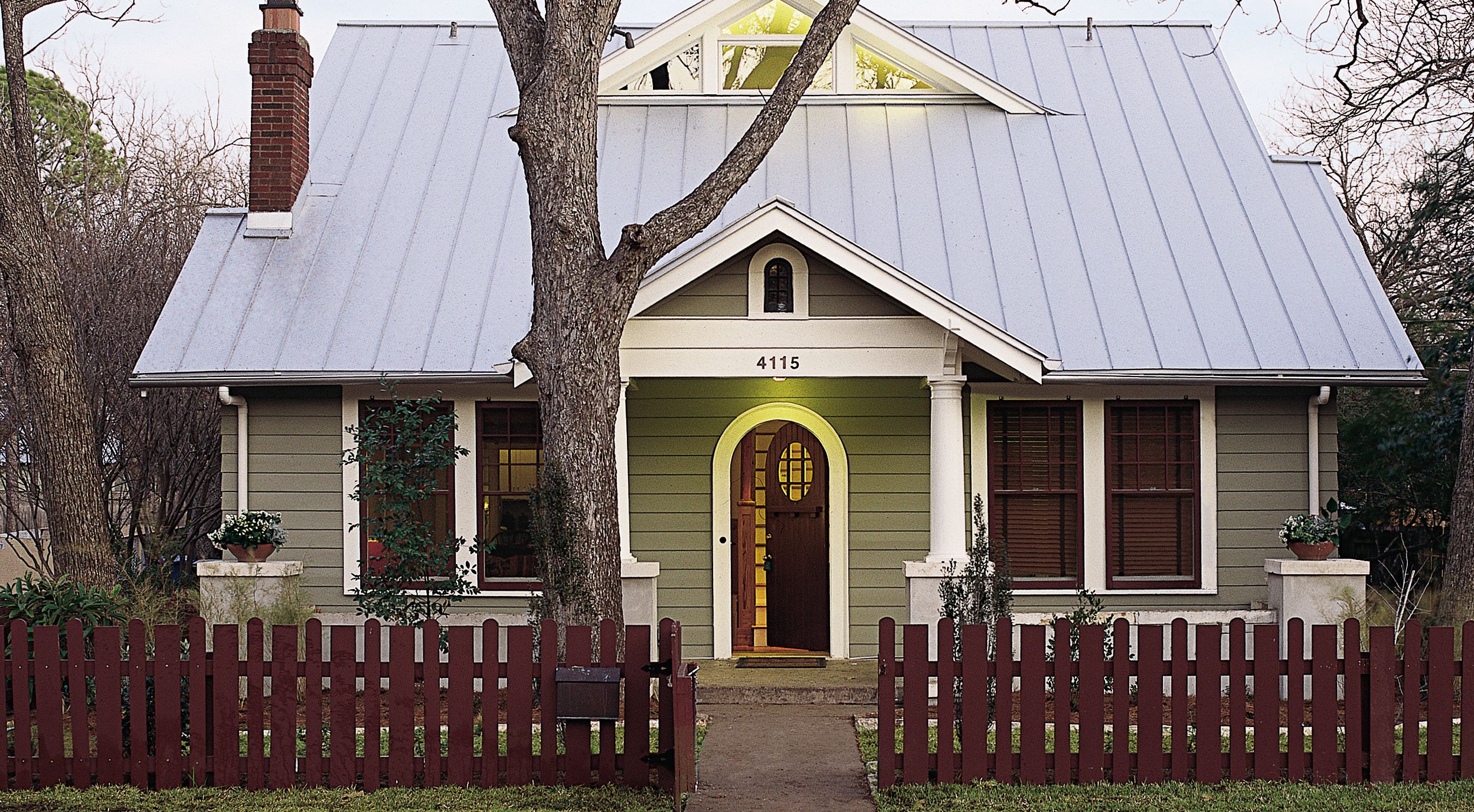Little Green Giant
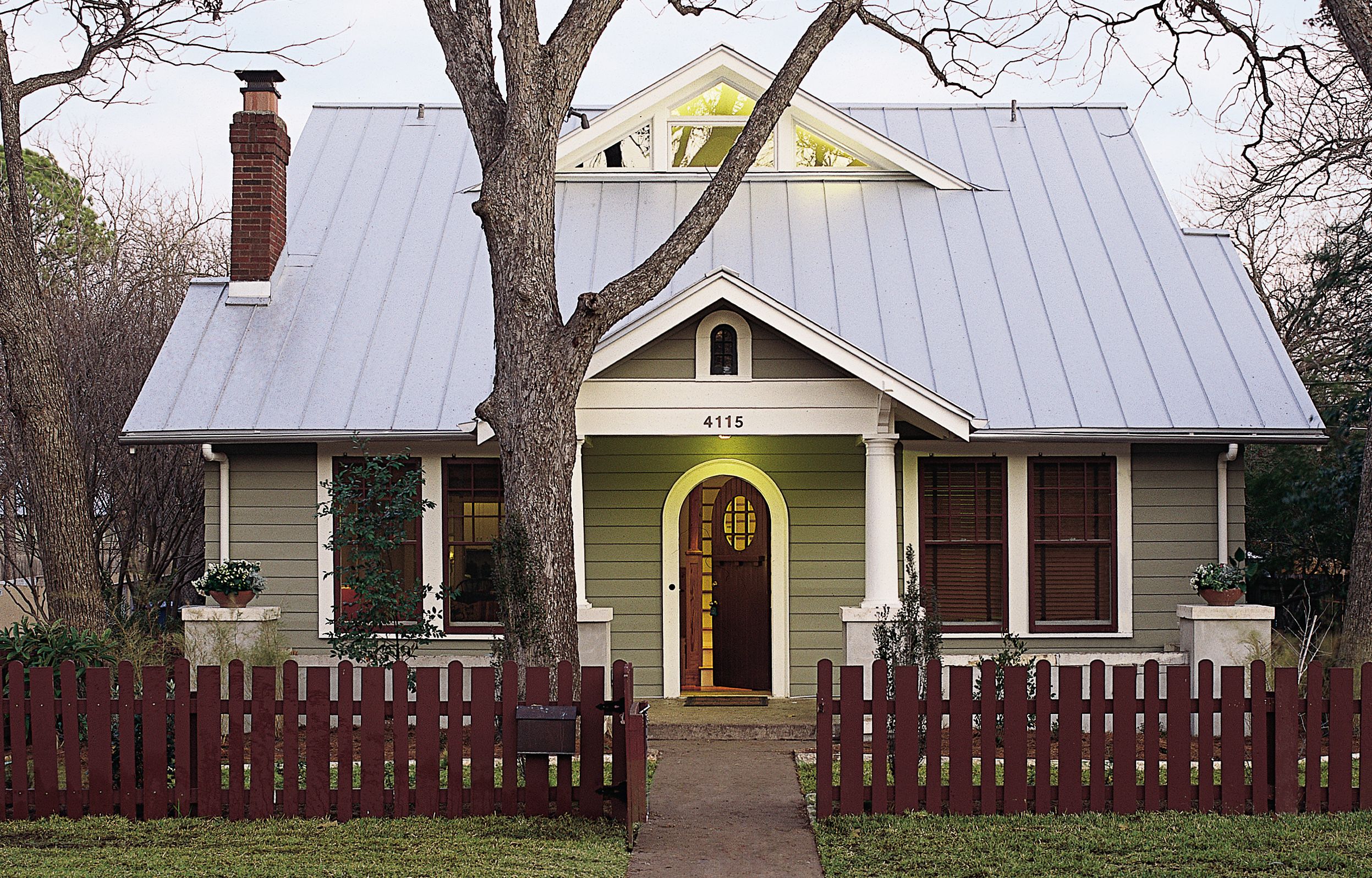
Like a chef who gets a glowing restaurant review, Michele Grieshaber and Michael Klug were ecstatic—and honored—to find out that their renovation had received a coveted five stars from Austin Energy’s Green Building Program. Working with the crew from This Old House TV, the newlyweds had set a lofty goal: to bump up and remodel their modest 1926 bungalow to make room for them and Michael’s two sons, and do it in the greenest way possible. When the green building program director, Richard Morgan, and Austin mayor Will Wynn delivered the news the day before the TV show wrapped filming, the two were beaming. “It’s a huge badge of honor,” Michele says. “It endorses that we did the right thing.”
What surprised everyone, however, was the fact that Michele and Michael’s house was one of only 35 of nearly 7,000 projects that have qualified for the highest award since the program began in 1991, and it was only the third remodeling project. Most green houses in the city are new construction, but executing a green remodel isn’t as difficult as many people think.
Before: A Modest Bungalow
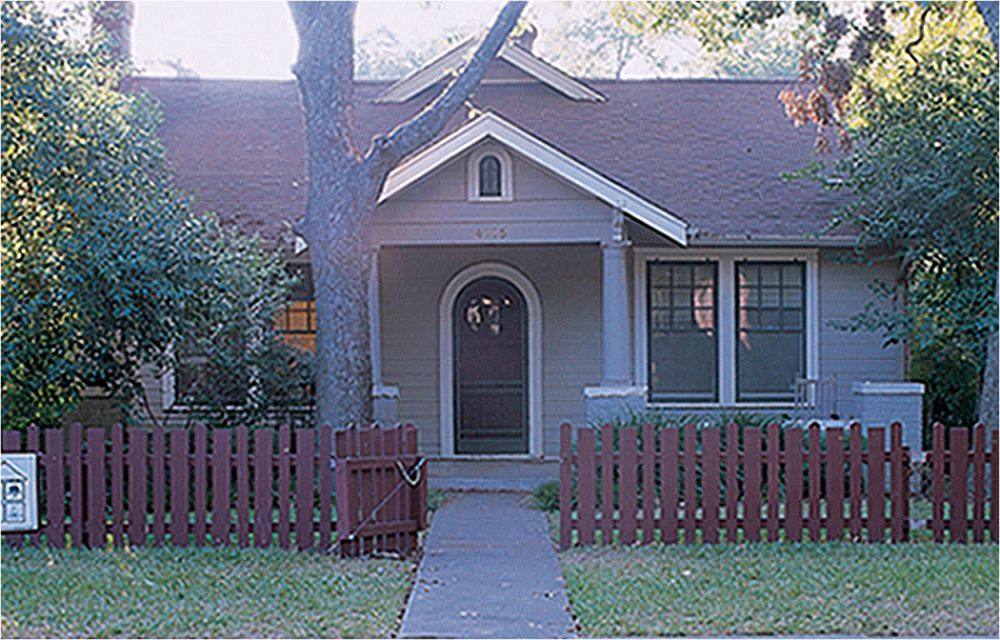
Morgan says the key isn’t necessarily a big budget, but the mind-set of the building team. “It’s not hard to get the rating, but it takes commitment,” he says. “These were committed homeowners, which is most important, and they found an architect, a builder, and subcontractors who were all also committed.” Architect David Webber and veteran green builder Bill Moore addressed every detail of the product choices and building methods with Michele and Michael, sticking to the basic tenets of green architecture and design at every turn.
The maxims they held to are easy enough to follow for any homeowner who wants to think ultra-green and create a house worthy of the ultimate accolade. Here’s a look at the thinking that guided them.
Use New Materials Conservatively
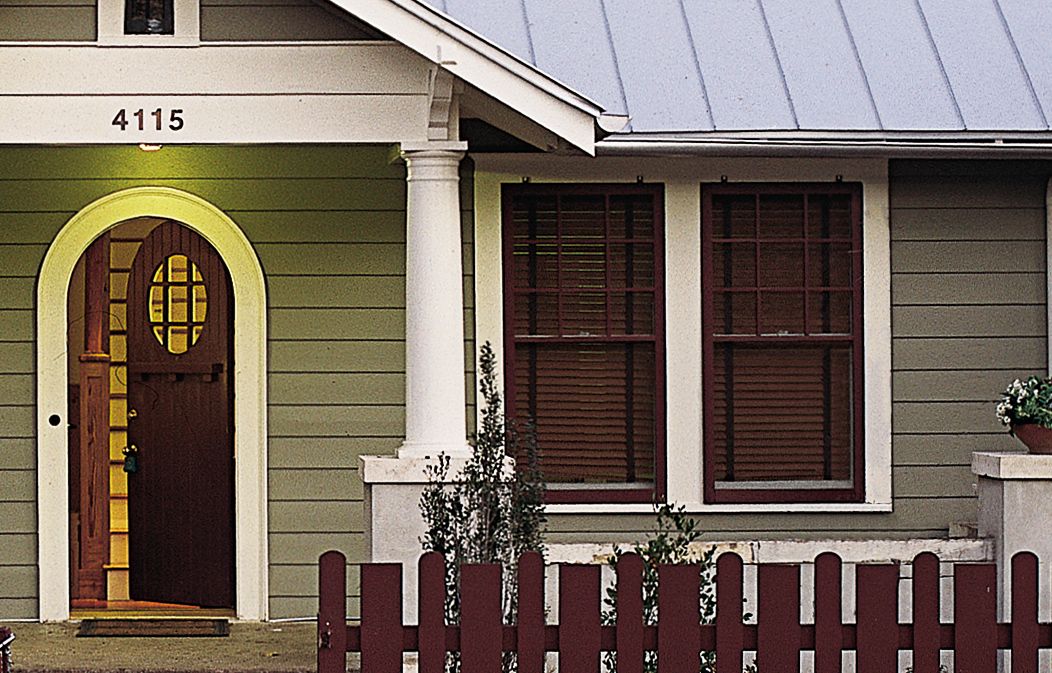
Just the fact that this project was a renovation, rather than new construction, makes it greener than most because of all the reused resources. Add to that the fact that the addition was modest in scope, bumping up the roof line by only 6 feet. Builder Bill Moore avoided ripping out and replacing existing materials and instead refurbished, patched, and matched—weatherstripping the old windows, for instance, and just fixing the cracks on the porch-wall stucco.
Live Close to Amenities
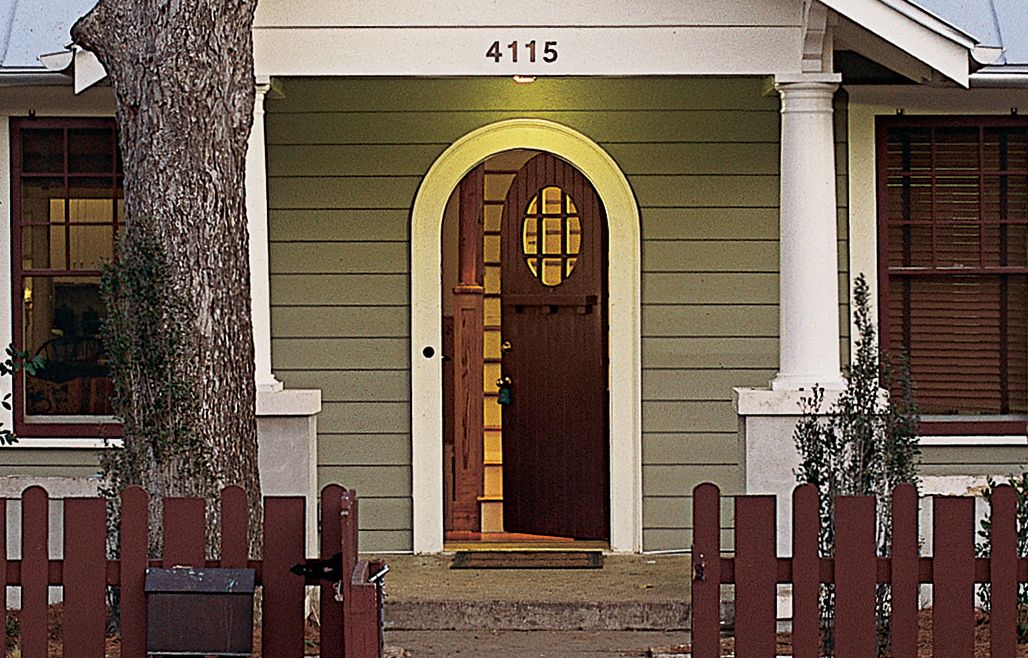
Living green means not just having a house that’s outfitted to save energy and resources, but also choosing a location that conserves, too. Michael and Michele’s house is close to public transportation and shops, which means less fuel is consumed when they go out.
Minimize the Need for Air-Conditioning
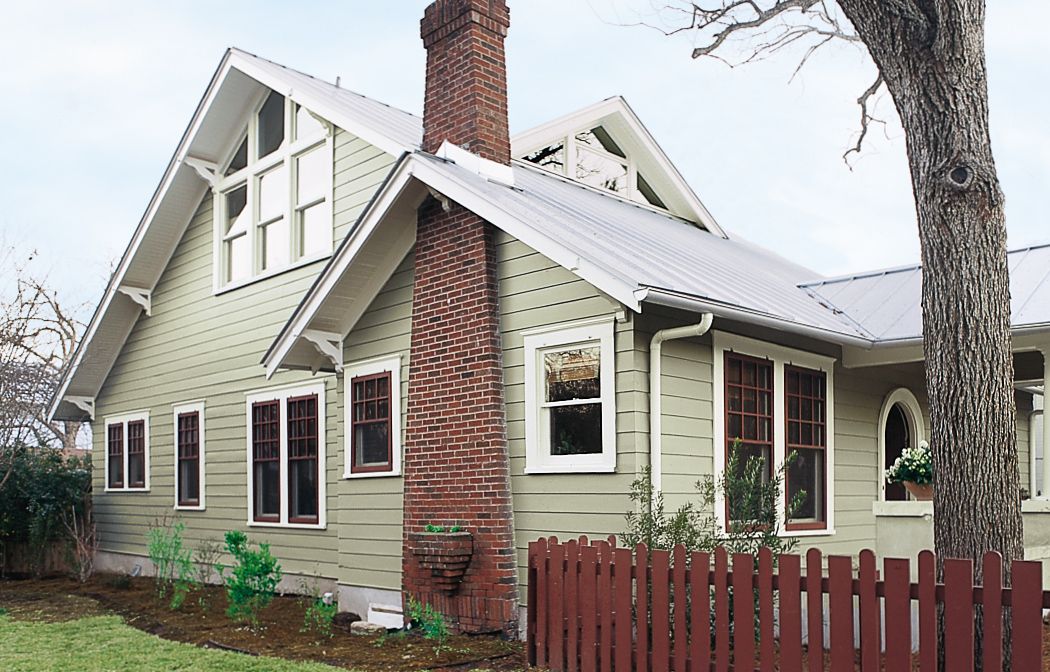
The new metal roof reflects heat so the house stays cooler without extra air-conditioning. It’s made from recycled metals and would be easy to recycle again if it had to be replaced many years down the road. Porches face east and west, shading the house’s interior from direct sun on hot days.
Solar panels by BP Solar
Harness Natural Resources
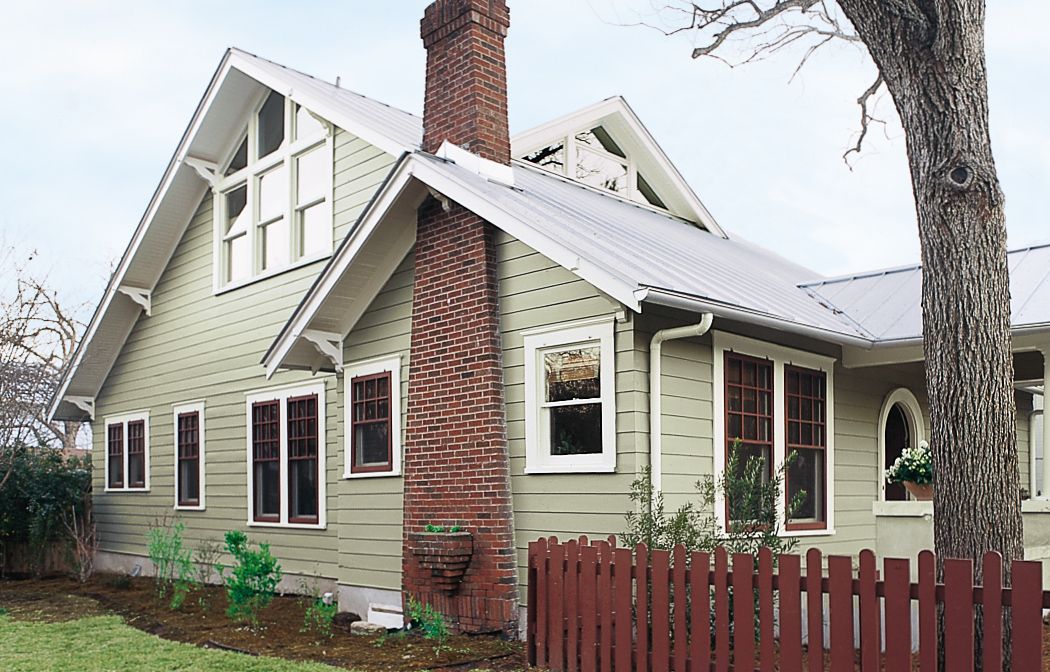
On the back of the roof, not visible from the street, south-facing solar panels will create as much as 40 percent of the power used in the house. Rainwater that runs off the roof into gutters will be collected in a tank to supply all the irrigation for the yard, which itself features native plants suited to the dry local conditions. And should there be an occasional downpour that the collection system can’t handle, there’s a French drain around the house to divert the water.
Roof from Galvalume; rainwater collection by Innovative Water Solutions; French drain by J-M Manufacturing
Finish with Green Coatings
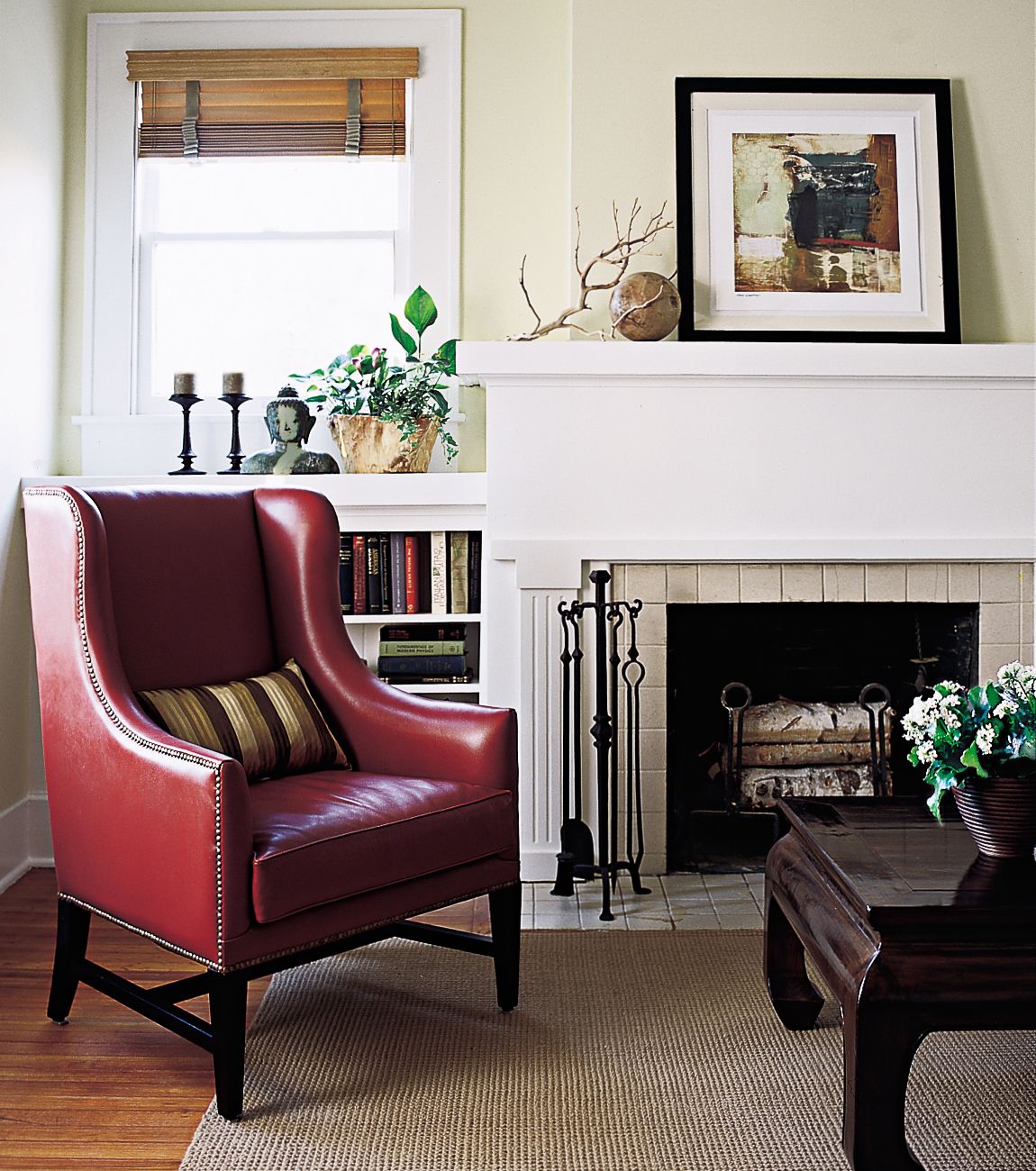
The interior was painted throughout using Benjamin Moore’s Aura line, a product low in volatile organic compounds (VOCs) that cause the dizzying paint smell. “Even though the paint costs a little more, it’s better for you, for the painters, and for the environment,” Michele says. “And the performance is better.” The original yellow pine flooring downstairs was patched and sanded, then topped with an oil sealer and paste wax. Oil finishes can be easily spot-repaired without being sanded off, extending the life of the floor and thus cutting back on future waste.
Choose Efficient Windows
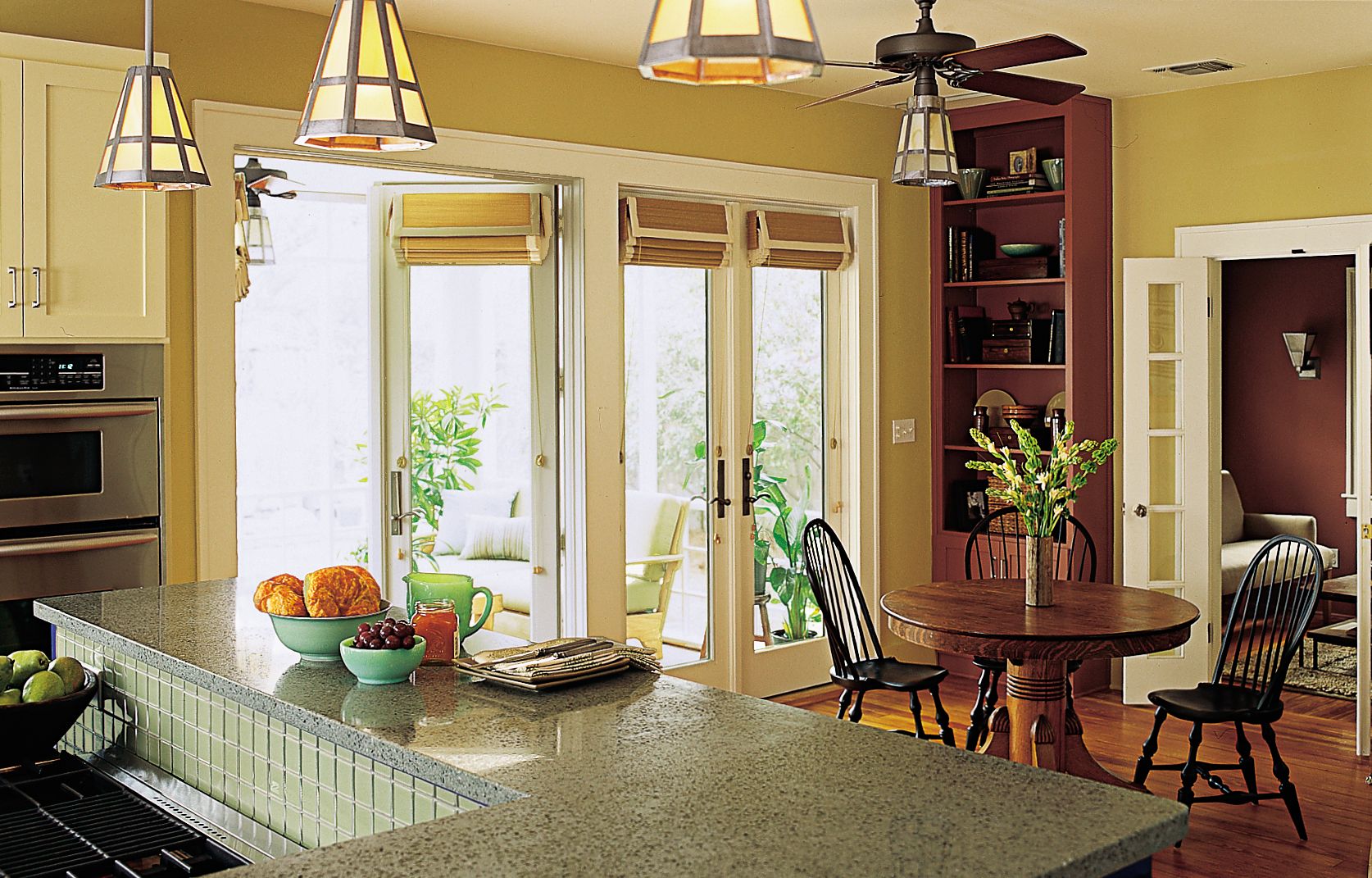
Natural light pours into the breakfast room through French doors that open out onto the screened porch just beyond. Designing interior rooms so they “borrow” light reduces the need to use electric lights. Like all of the added windows, the doors feature double-pane insulated glass with a low-E coating that lets visible light through but keeps out heat. This reduces the need for air-conditioning, which the couple prefers to leave switched off anyway. All windows and glass doors also have shades or shutters to reduce heat transfer.
Windows and French doors by Andersen Windows; shutters and blinds by Budget Blinds
Design with Low-Energy Lighting
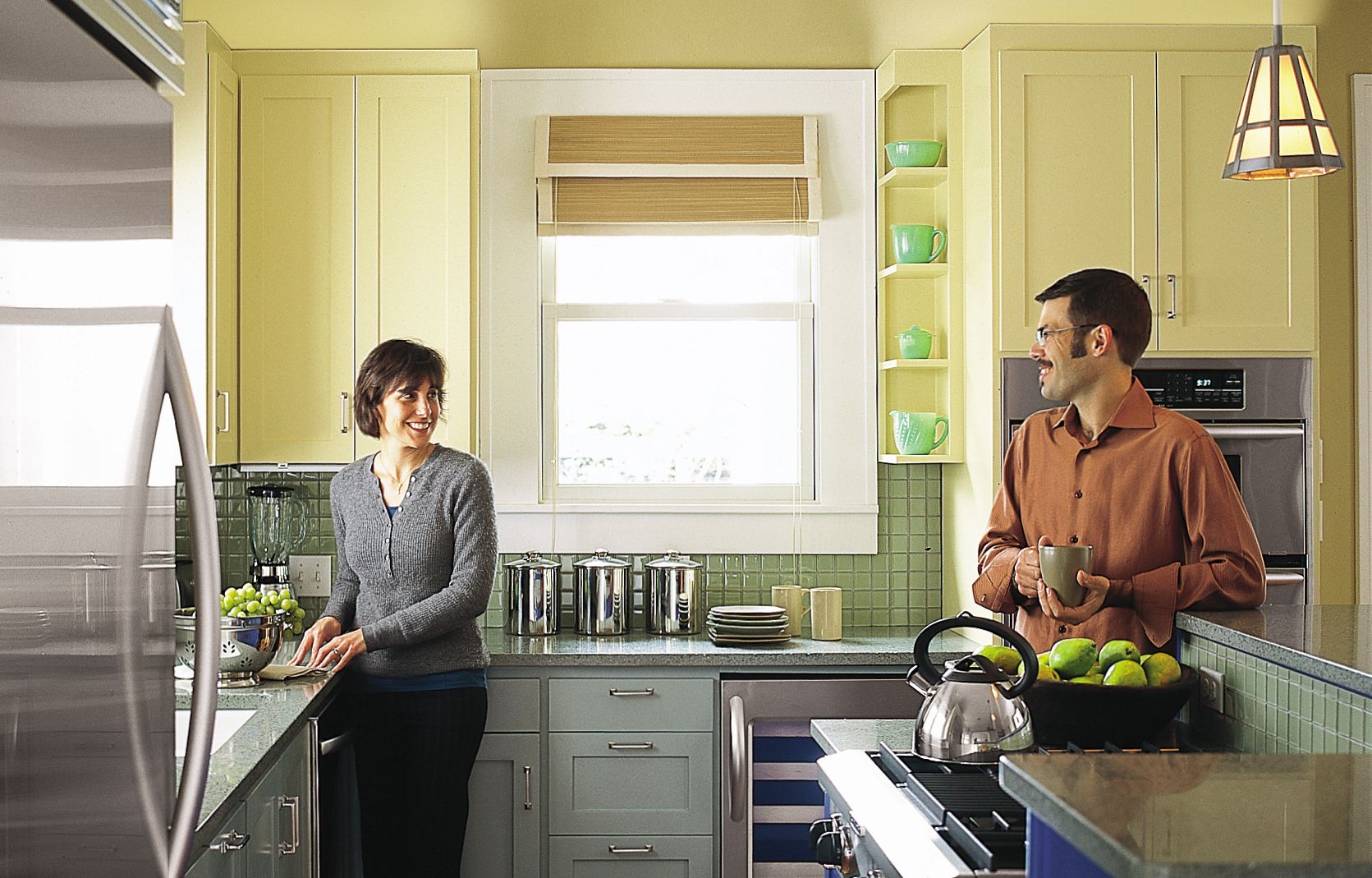
The energy-efficient artificial lighting in the kitchen includes a cutting-edge kind of strip light with ultra-efficient light-emitting diodes (LEDs), over the cabinets, which illuminate the ceiling and bounce diffused light down throughout the room. LEDs use one-tenth the energy of traditional incandescent lights and last 50 times longer. The recessed fixtures are equipped with compact-fluorescent bulbs, which last four times as long as incandescents and use a quarter of the energy. The pendant fixtures have halogen bulbs, which aren’t as efficient as LEDs or fluorescents but are still considered a green option for bright light.
Lighting design by Atelier Ten; LED lighting by Io Lighting; custom light fixtures by Two Hills Studios
Build with Wood Responsibly
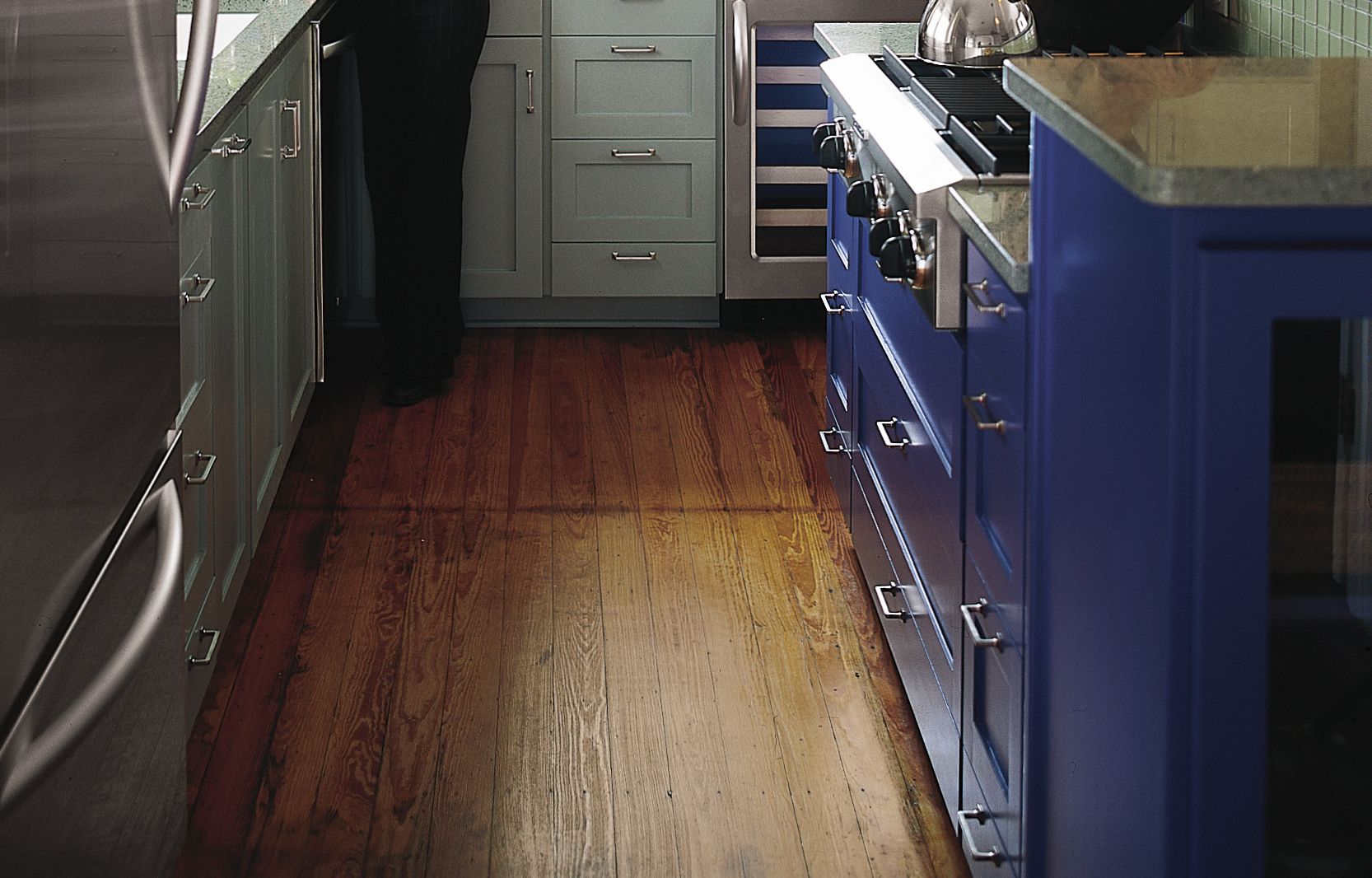
A small shop in Austin built the cabinets—green just for the fact that locally made products need less fuel for shipping. But also, the boxes are crafted from Arreis, a medium-density fiberboard (MDF) made from 100 percent post-industrial wood waste and no added formaldehyde, which can off-gas and cause health problems. The face frames are Lyptus, a plantation-grown eucalyptus hybrid that regrows from the stump after the wood is harvested about every 15 years.
Cabinet materials by Sierra Pine and Fine Lumber & Plywood
Choose Products Made from Recycled Materials
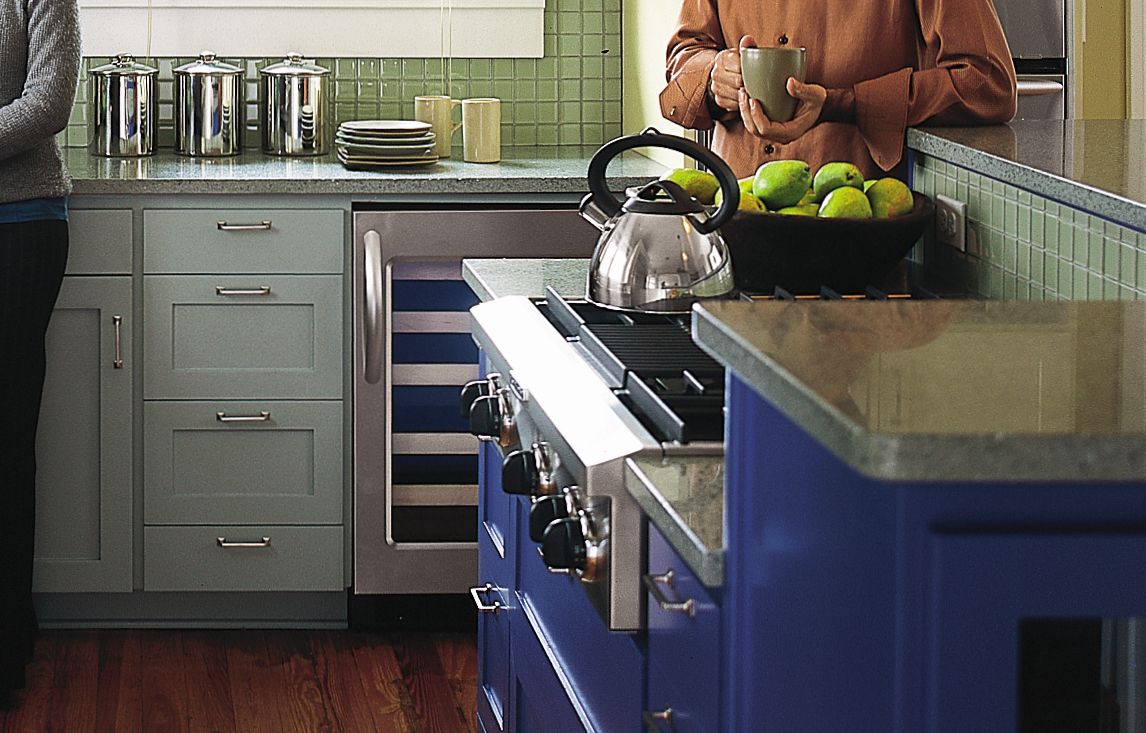
The kitchen countertops are IceStone, a product made from crushed glass and concrete. The glass comes from recycled bottles that might otherwise have ended up in a landfill.
Install Energy Star Appliances
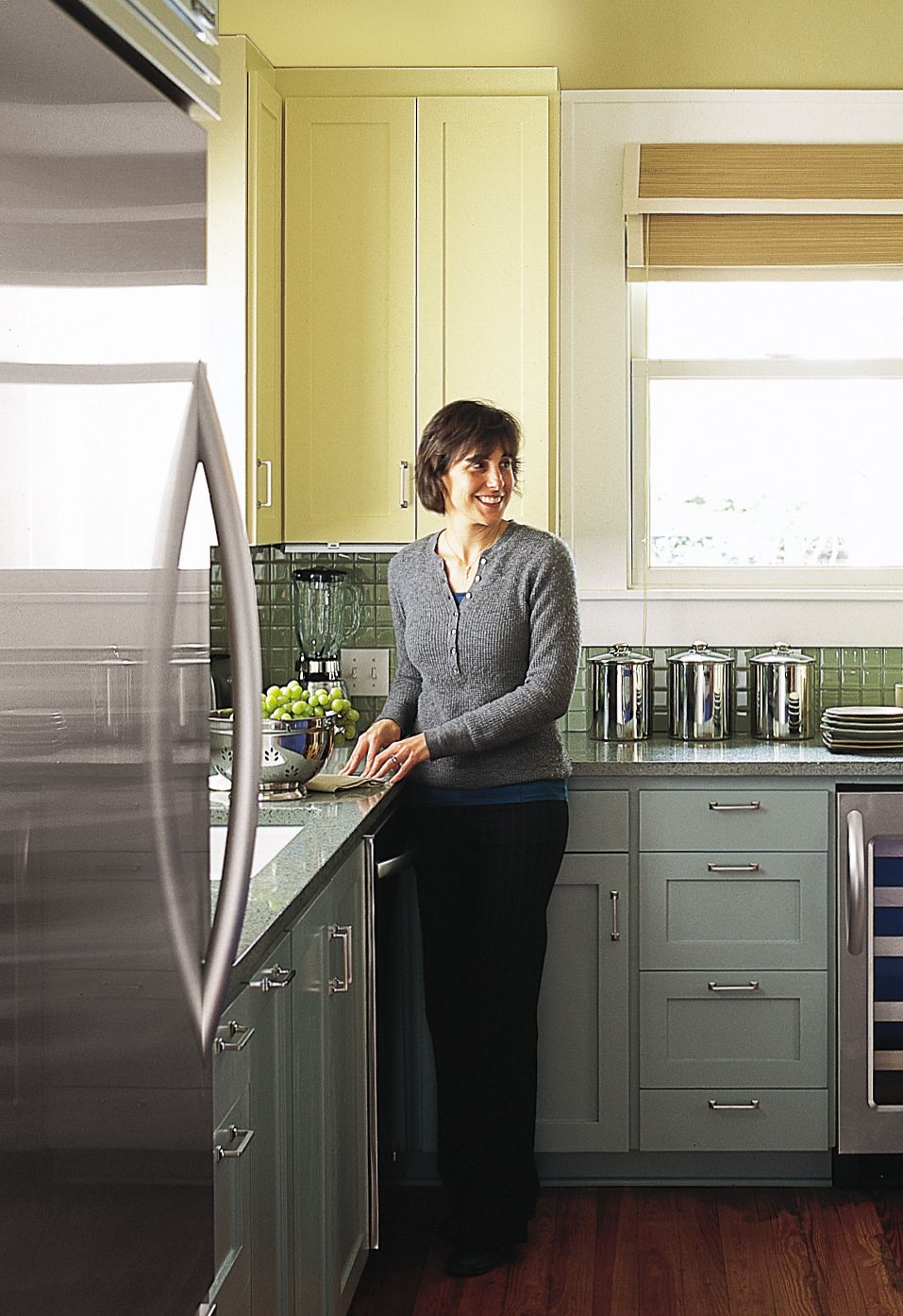
The refrigerator and dishwasher are Energy Star rated, which means they use less energy than most.
Appliances from KitchenAid
Build with Salvage
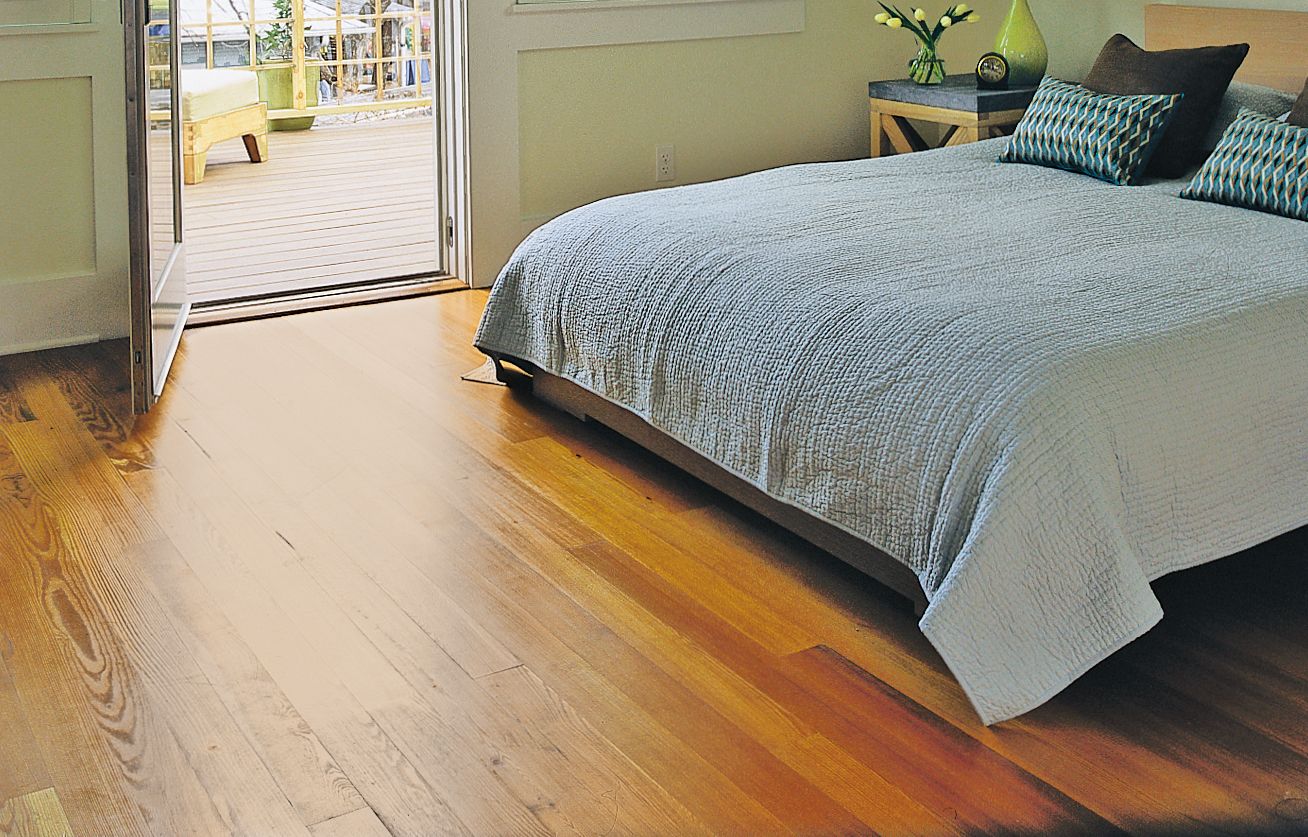
The upstairs flooring is yellow pine cut from beams salvaged from a textile mill. Using reclaimed wood avoids waste and reduces the need to cut down forests. The tight grain often found in antique wood also makes the flooring more dent-resistant and therefore more durable than faster-grown second-harvest wood.
Reclaimed flooring by Lumber Liquidators
Don’t Fight the Climate
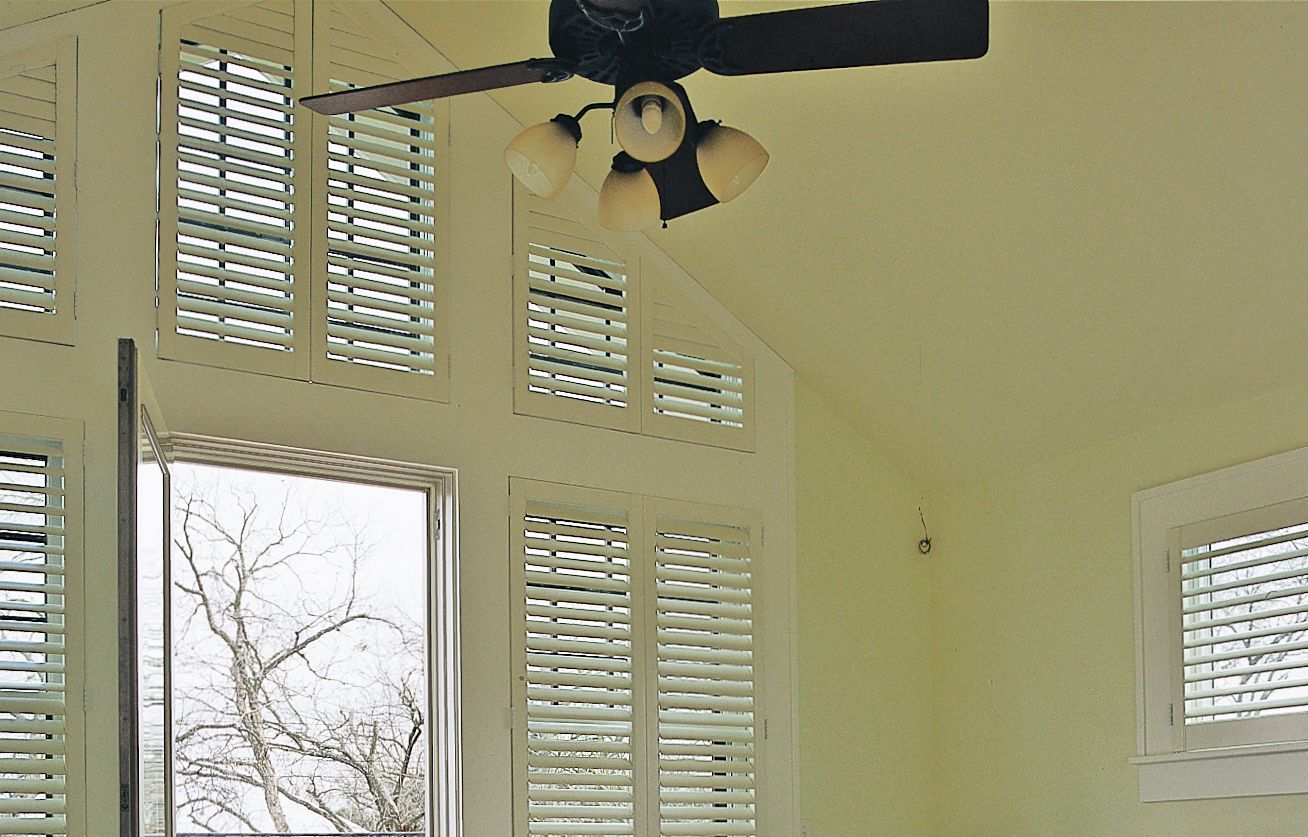
Wooden shutters allow light into the new master bedroom but can also serve to shut out the Texas heat. The owners set the AC above 80 degrees when they use it, but more often they opt to leave it off and switch on a ceiling fan—there’s one in every room—or open the door instead.
Ceiling fan by Hunter Fans
Use Low-Maintenance Materials
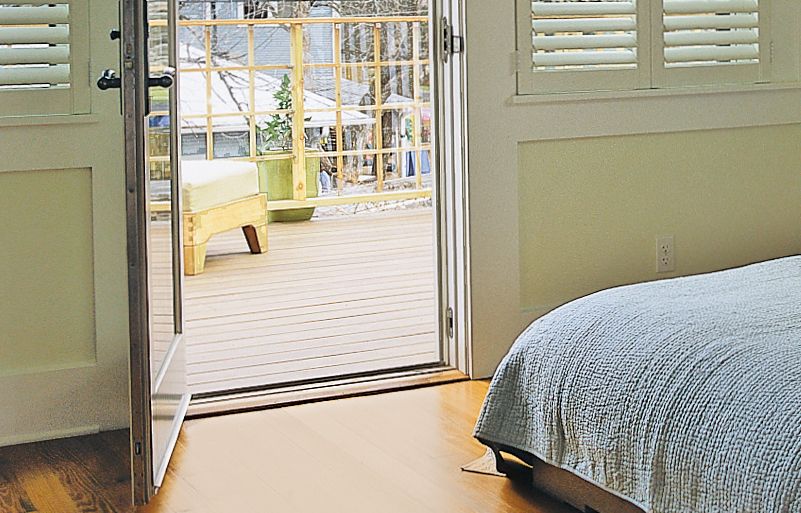
The deck outside the master bedroom has Trex planks, which are made of recycled plastic and wood fiber. It naturally resists decay and needs little upkeep, so it will last longer than the average wood deck.
Be Frugal with Space
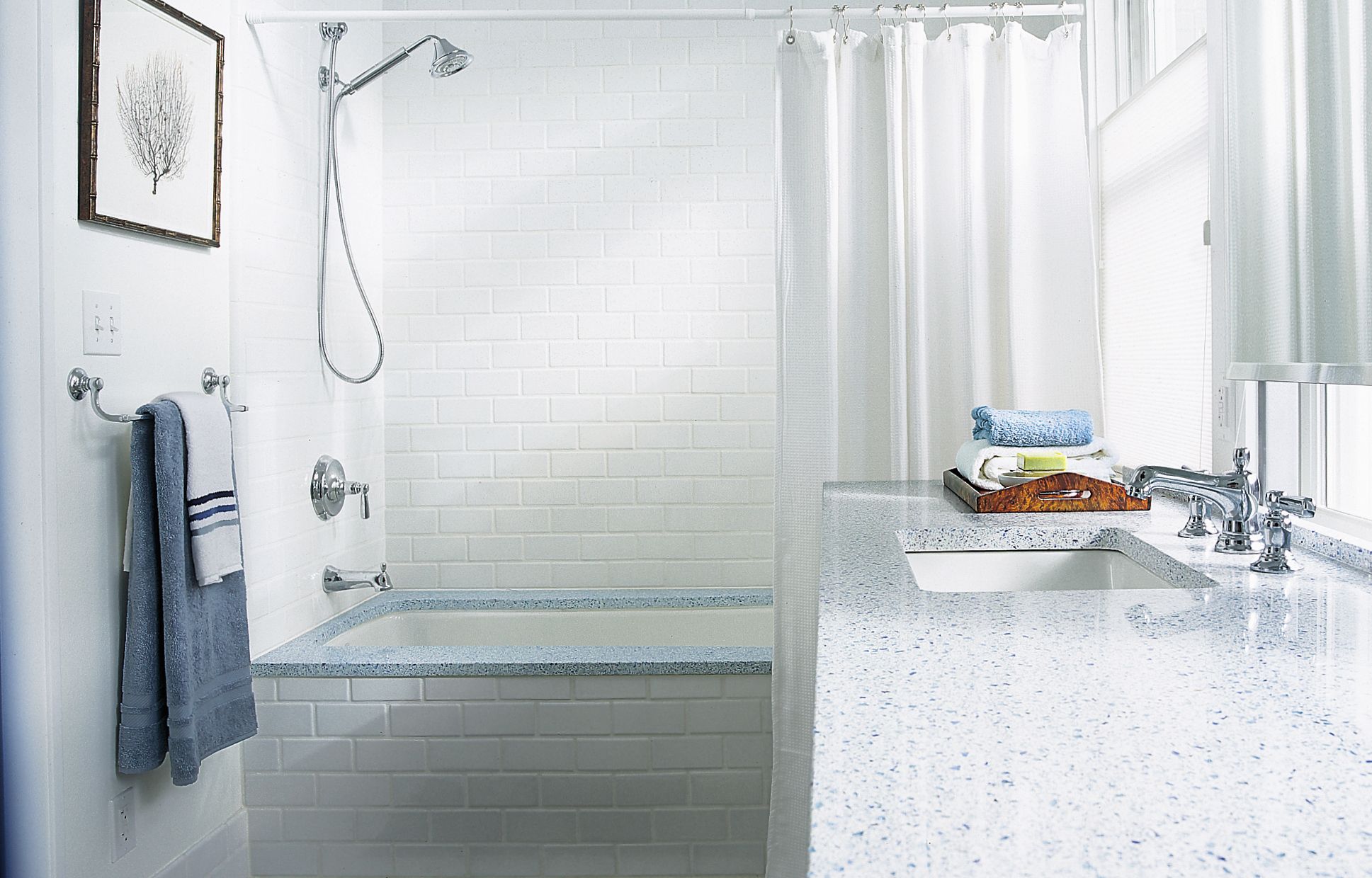
Upstairs, the crew added two bedrooms and a bathroom, plus an oversize landing that does double duty as a library. The fact that the bathroom serves two bedrooms is another example of Michael and Michele’s determination to add only as much space as they really need.
Conserve Water
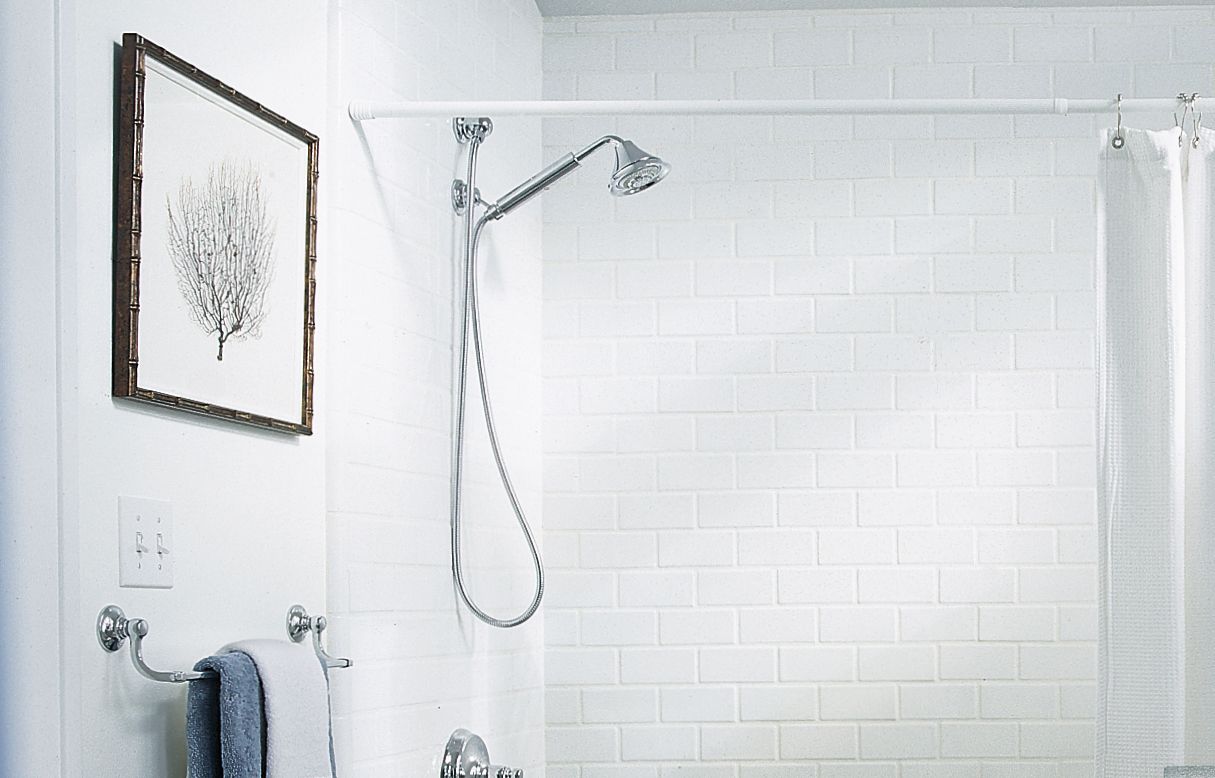
The bathrooms’ faucets and showerheads are all low-flow and water-conserving. The toilet is both low-flow and high-efficiency, which eliminates the need for multiple flushes.
Plumbing fixtures by Kohler
Design with Pleasing Finishes
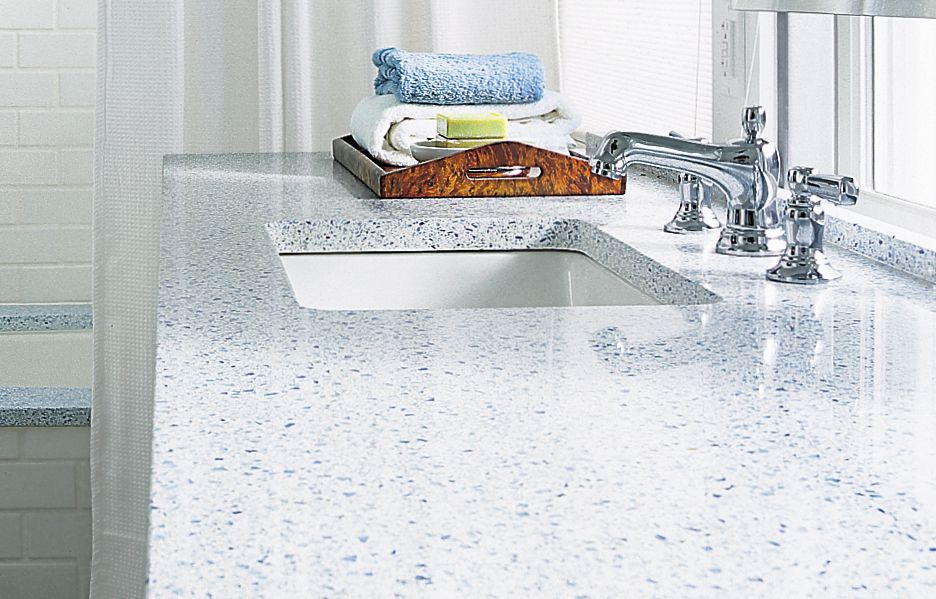
“Green architects and builders often go out of their way to incorporate beautiful details because people are most likely to care for buildings that they love,” says architect David Webber. “This lessens the chance that the structures will be torn down and replaced.” The bathroom countertop and tub shelf, also made of IceStone, the material used in the kitchen, complement the clean white handmade tiles. Only half the usual clay goes into these tiles; the rest of the mix is crushed bottle glass and granite dust left from an asphalt company’s rock-crushing operation. The company once dumped the stuff into a canyon, so diverting the material into tiles protects the canyon as well as the area where clay is mined.
Bathroom tile from Fireclay Tile
Reduce Waste

To allow the family to relax in comfort without using the air conditioner, the crew built this screened porch where there was once an old cedar deck. Because they deconstructed it carefully, they were able to remill the wood and use it in the trellis-style railing here and around the deck above. Any job-site waste that couldn’t be reused was sent to a special collection site to be recycled.
Job-site recycling by Triad Waste Management
Use Materials That Last
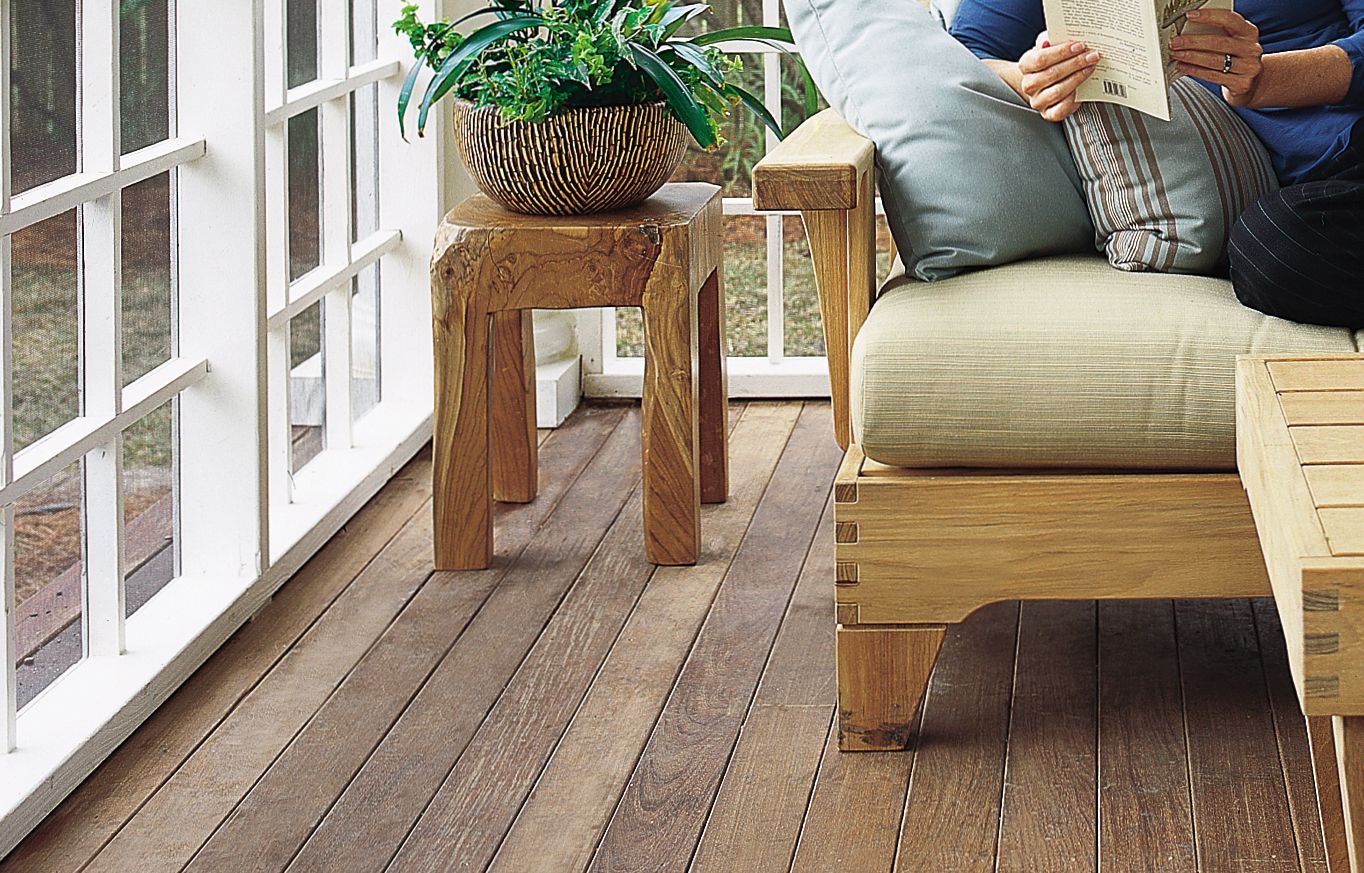
Durability reduces future waste. To blend in the addition with the old house, it was sided with HardiPlank, a long-lasting fiber-cement product, instead of wood. For the porch flooring, they chose ipe, a fast-growing, tropical hardwood that’s unusually dense and tough (though the Green Building Program has not been able to document an ipe that they feel is harvested sustainably). The support framing under the ipe was treated with an eco-friendly borate solution to prevent termite damage.
Green on the Inside
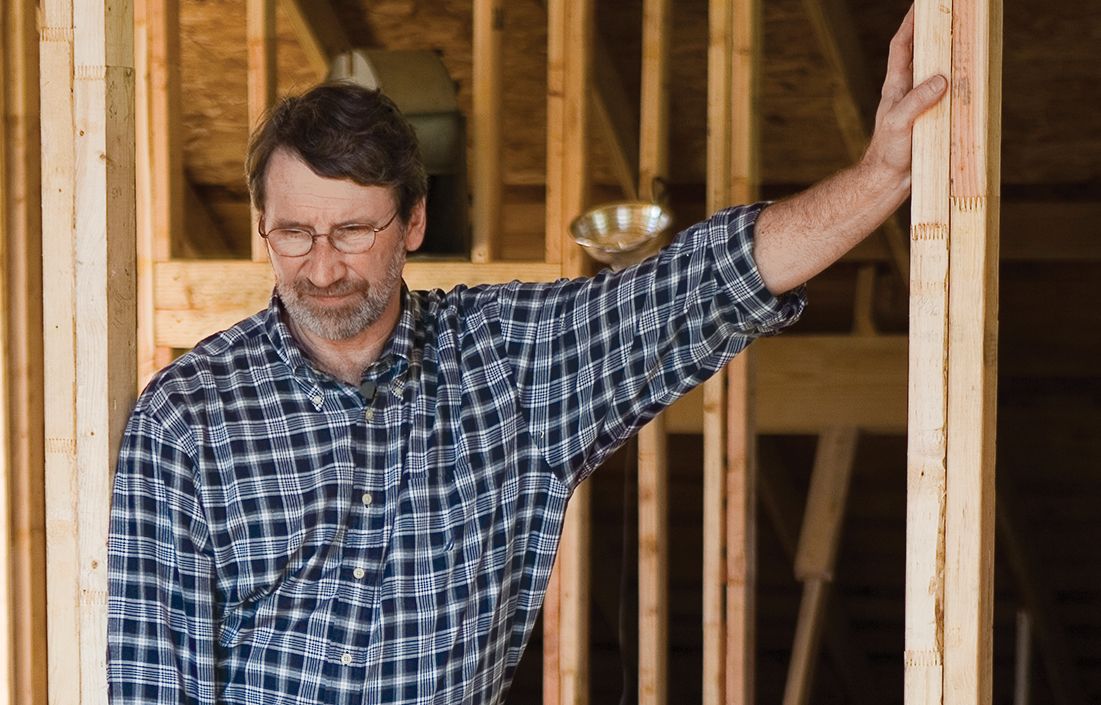
Michele and Michael’s house doesn’t just have environmentally friendly finishes and design. A lot of what makes it a five-star remodel are the systems and structural parts that use less energy, keep the house healthy, and cut down waste.
Finger-Jointed Studs
The upstairs addition was framed using finger-jointed studs, oriented strand board (OSB), and engineered lumber. All include waste wood or wood fibers, utilizing more of the tree.
Engineered lumber from Georgia-Pacific
Green on the Inside: Air Quality
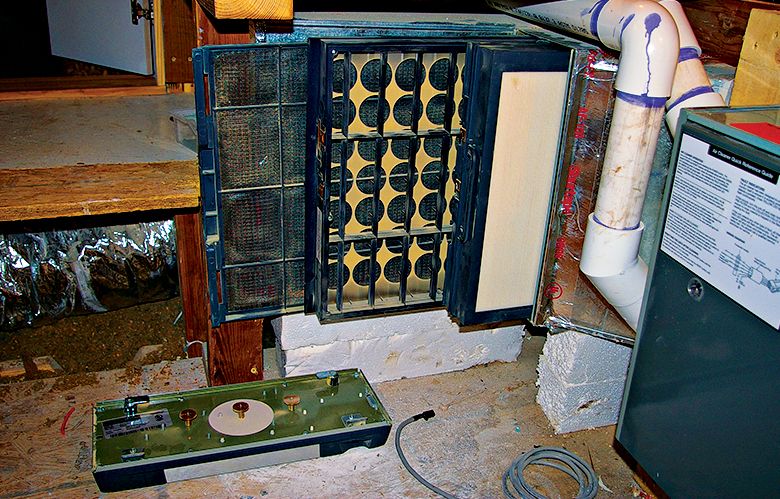
Top-quality bathroom fans and a central vacuum system both protect indoor air quality. There’s also a whole-house air cleaner, which removes 99.98 percent of airborne dust, soot, and mold. Hot water for the bathroom and the rest of the house is supplied through an on-demand water heater, so energy isn’t wasted by constantly heating a tank of water when it isn’t needed.
Bathroom fans and central vacuum from Broan-NuTone; air filter and HVAC by Trane
Green on the Inside: Efficient HVAC

The HVAC crew dismantled the old heating and cooling equipment and recovered the Freon refrigerant from the air conditioner so it can’t damage the Earth’s ozone layer. The new high-efficiency system has central air and a gas furnace, both carefully sized to meet the house’s needs now that it’s insulated with gap-sealing foam and recycled cellulose.
HVAC contractor and Freon recovery by All Year Heating & Cooling
